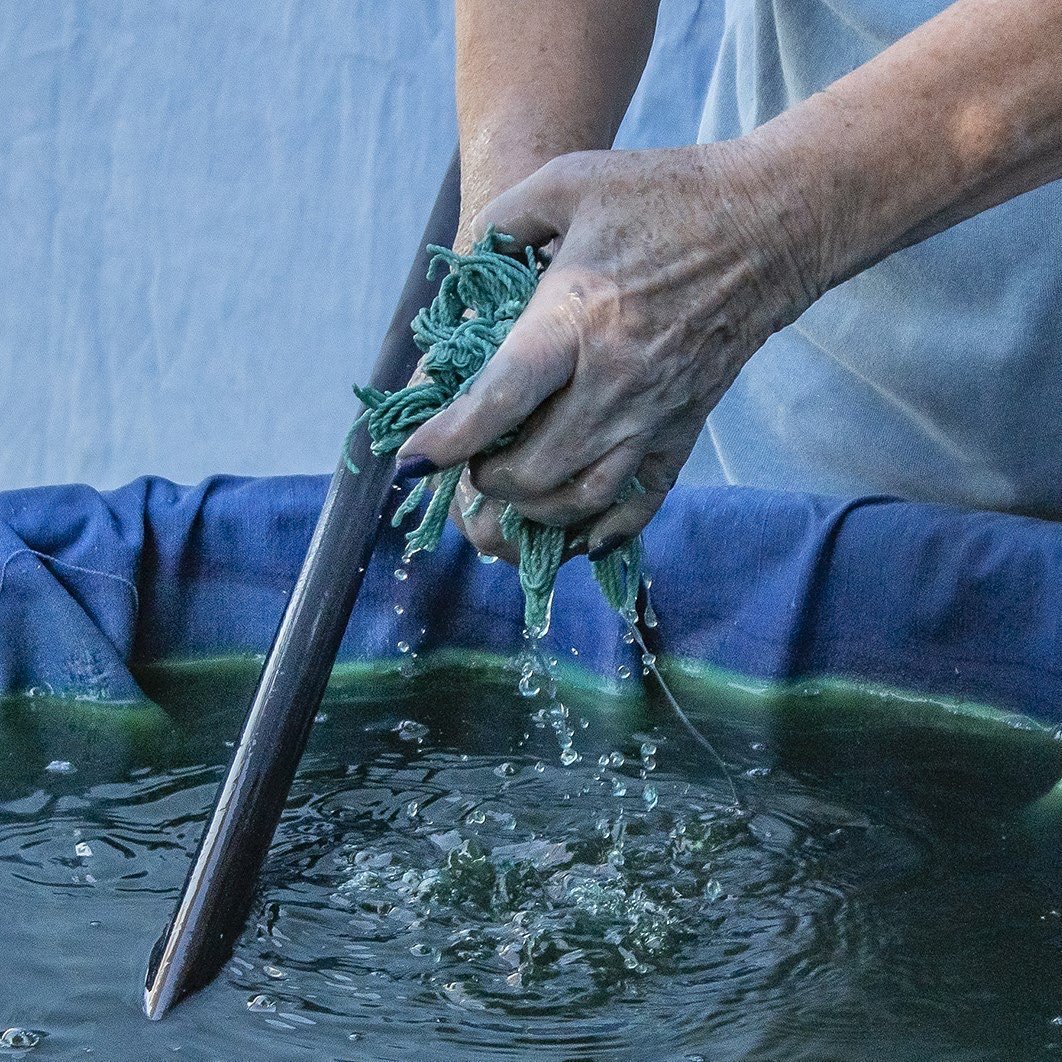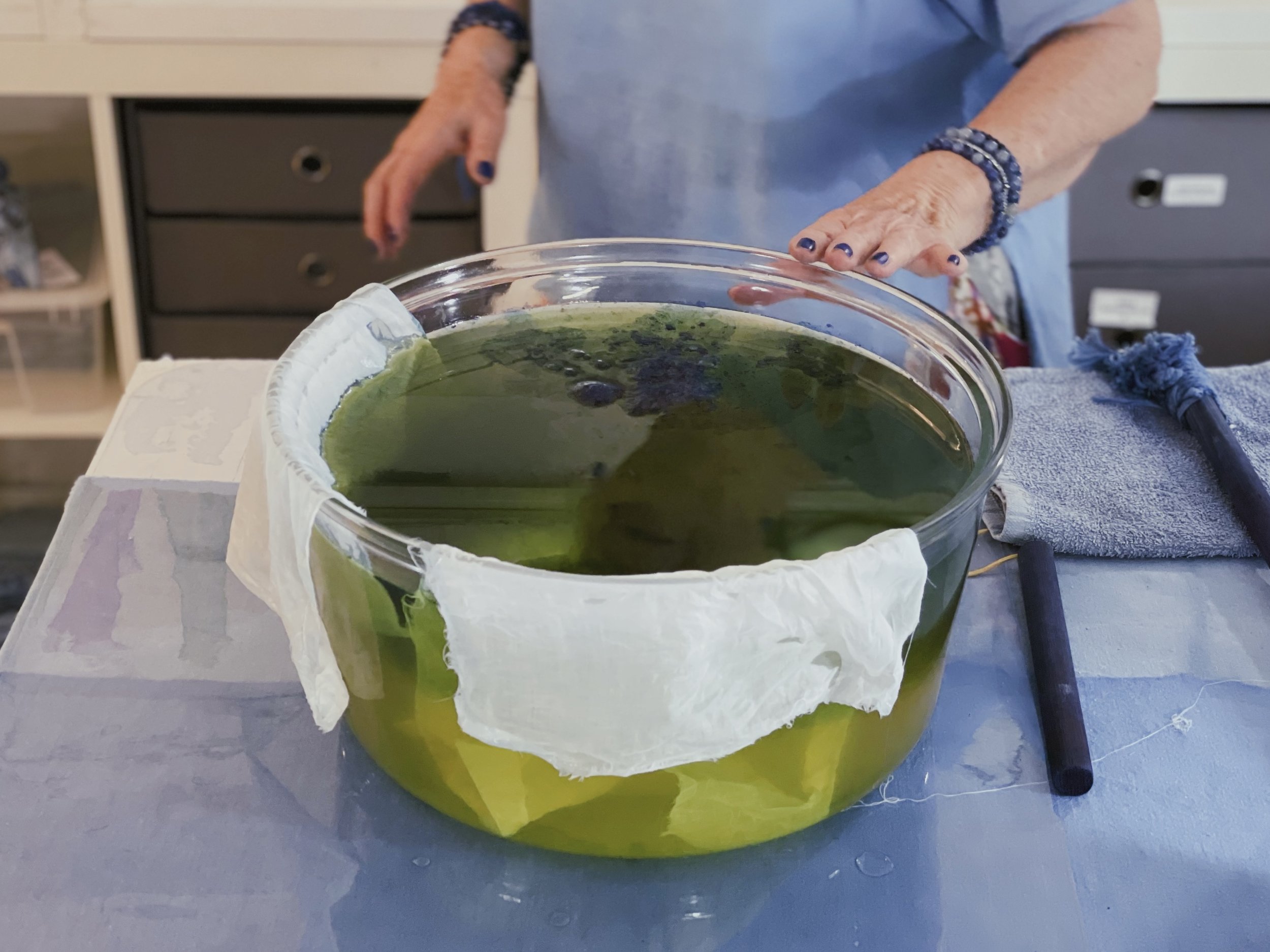What to do in Toulouse: "Bleu de Pastel" Dye Workshop at AHPY
When pondering what to do in Toulouse, our beloved "Ville Rose" springs to mind with its iconic terracotta architecture. But beneath the pink hues lies a deeper shade of significance – the mesmerizing "Bleu de Pastel." And if you’re wondering what’s Toulouse famous for besides the rosy tints, this ancient blue pigment rightfully earns its spot on the list.
This morning, the Toulouse Gourmet Tours team embarked on a journey of color and tradition. Nestled a stone's throw away from the Place du Capitole on 13 Rue des Lois, we stepped into the enchanting realm of AHPY. Beneath the boutique, we discovered an underground world where the pastel magic comes alive, all curated by the gifted Annette Hardouin, awarded the title of Maître Artisan en métier d'art since 2010.
But before we immerse ourselves in our experience, let’s unfold the vibrant tapestry of what bleu de pastel truly is.
A Dab of Pastel History
The Pastel plant (Isatis tinctoria), or "guède" as it's traditionally known, is more than just a source of color; it’s a symbol of prosperity and legacy. Its crushed leaves yield a pigment that birthed the iconic "bleu de pastel," and its seeds are a treasure trove for pristine pastel oil.
The heartlands of Toulouse, Carcassonne, and Albi, nestled in the Pays de Cocagne region, became the epicenter of pastel cultivation. During the Renaissance period, pastel blue wasn’t merely a dye; it was "blue gold." This lucrative trade brought immense wealth to the region. As proof, one needn't look further than the majestic Toulouse mansions, or "hôtels particuliers." The Hôtel d'Assézat, often hailed as Toulouse's architectural crown jewel, stands as a testament to the opulence and success of pastel merchants of that era.
However, as history teaches us, nothing remains constant. The arrival of indigo in the 15th century began the gradual overshadowing of pastel. Yet, after centuries in the shadows, pastel has seen a renaissance in the 21st century, with its dyeing artistry now recognized as part of France's intangible cultural heritage.
From Shadows to Limelight: AHPY
The rebirth of pastel owes a nod to Denise and Henri Lambert, who rediscovered its allure in the 20th century. But the vibrant pulse of pastel beats strong thanks to advocates like Yves and Annette, the heart and soul behind AHPY. For over 20 years, this duo has not just been recreating pastel but living it, transforming it from a mere pigment into art and lifestyle.
At our workshop today, Annette guided us through the intriguing dyeing process. While pastel isn’t naturally water-soluble, with a touch of glucose and ammonia (historically, male urine was used), it transforms beautifully. The dye bath may seem greenish at first, but as fabric meets air, a brilliant pastel blue emerges through oxidation.
For those itching to dive deep into pastel's history, techniques, and even try their hand at dyeing, AHPY's workshops are a dream come true. They offer both brief introductions and extended sessions to dye your own treasures.
Wrapping up our AHPY experience, we departed with not just vibrant fabrics but a profound appreciation for Toulouse's colorful past. So, as you navigate what to visit in Toulouse, let "bleu de pastel" be your guide. Dive into AHPY’s captivating world of pastel and let Toulouse’s cherished blue enchant your senses.












